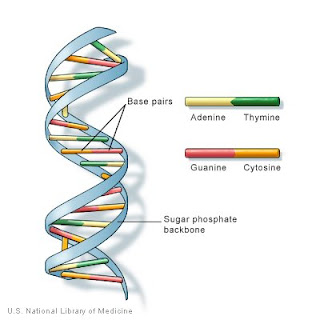In the late nineteenth century, a German biochemist found the nucleic acids, long-chain polymers of nucleotides. Later it was found that the sugar in nucleic acid could be ribose or deoxyribose, giving two forms: RNA and DNA. In 1943, American Oswald Avery proved that DNA carries genetic information. In 1953, scientists Watson and Crick gathered data from several studies of the DNA and postulated a model for the structure of DNA and they deduced that the DNA is a intertwined and extremely long double helix.
Needless to say that all this wouldn’t have been possible if other scientists hadn’t made important discoveries before. Some of the scientists who also made models of the DNA were: Pauling and Corey in 1948 but their model was wrong because as Watson and Crick said in their article in “Nature”: “we believe that the material which gives the X-ray diagrams is the salt, not the free acid and some of the van der Waals distances appear to be too small.”
Fraser suggested other three-chain structure which was wrong too.
Although in the article R.E. Franklin only appears in the acknowledgments, I would like to talk about her because she played an important role in the discovery of the deoxyribose nucleic acid structure.
Franklin, working mostly alone, found that her x-ray diffractions showed that the "wet" form of DNA (in the higher humidity) had all the characteristics of a helix. She suspected that all DNA was helical but did not want to announce this finding until she had enough evidences on the “dry, cristall” as well.
Once Franklin’s results were shown to Watson. He and Crick put forward a radically different structure for the salt of desoxyribose nucleic acid and this structure (the double helix) was worldwide accepted.
This structure has two helical chains each one coiled round the same axis. Each chain consists of phosphate-diester groups joining β-D-deoxyribofuranose residues with 3’ 5’ linkages. Both chains follow right-handed helix and run in opposite directions. The bases are on the inside of the molecule and the phosphates on the outside.
The structure is an open one and its water content is rather high. Moreover the two chains are held together by hydrogen bonds between the purine and pyrimidine bases. The planes of the bases are perpendicular to the fibre axis and they are joined together in pairs. One of the pair must be a purine and the other a pyrimidine. It is important to know that there are specific pairs of bases: adenine with thymine and guanine with cytosine.
The Watson and Crick’s model (also known as the double helix) showed how data could be stored in the DNA molecule.
SARA UROZ










